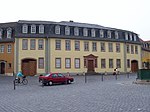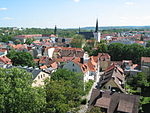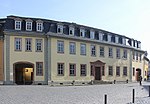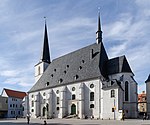Duchess Anna Amalia Library
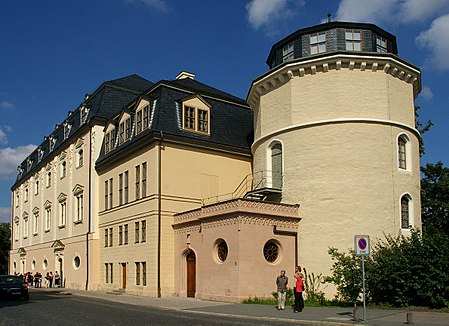
The Duchess Anna Amalia Library (German: Herzogin Anna Amalia Bibliothek) in Weimar, Germany, houses a major collection of German literature and historical documents. In 1991, the tricentennial of its opening to the public, the Ducal Library was renamed for Duchess Anna Amalia. Today, the library is a public research library for literature and art history. The main focus is German literature from the Classical and the late Romantic eras. The library was inscribed on the UNESCO World Heritage List as part of the Classical Weimar site because of its testimony to the global cultural importance of Weimar during the late 18th and early 19th centuries during the Weimar Classicism movement.In 2004 a fire destroyed the main wing and a substantial part of the collection; restoration of salvaged volumes lasted until 2015.
Excerpt from the Wikipedia article Duchess Anna Amalia Library (License: CC BY-SA 3.0, Authors, Images).Duchess Anna Amalia Library
Platz der Demokratie,
Geographical coordinates (GPS) Address External links Nearby Places Show on map
Geographical coordinates (GPS)
| Latitude | Longitude |
|---|---|
| N 50.978611111111 ° | E 11.332222222222 ° |
Address
Herzogin Anna Amalia Bibliothek
Platz der Demokratie 1
99423 , Altstadt
Thuringia, Germany
Open on Google Maps



